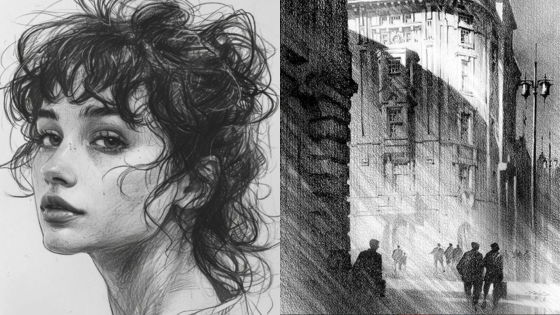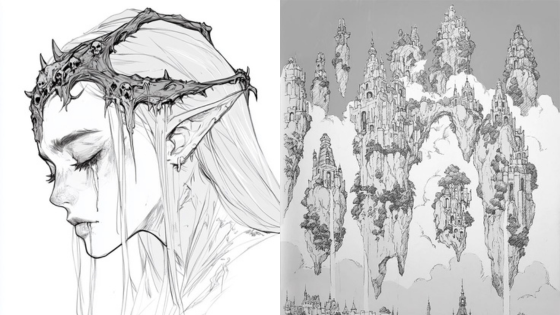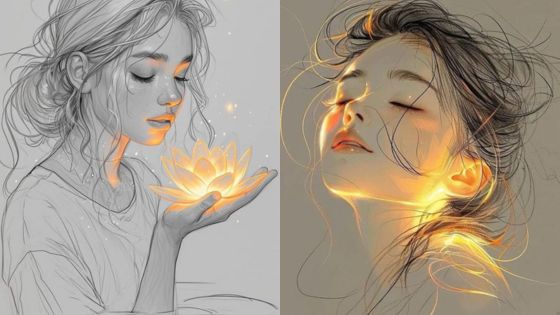

Exploring the world of body sketching opens up a captivating realm for artists of all skill levels. It combines creativity with foundational techniques, offering a way to express the human form uniquely and dynamically. Whether one is a beginner looking to get started or an experienced artist seeking to refine their skills, understanding body sketches can be both useful and enjoyable.
Drawing different body types enriches any artist’s portfolio and helps to build a comprehensive understanding of proportions and movement. Adopting various sketching techniques elevates the quality of the work, encouraging experimentation and personal style. By observing real-life references and models, artists can enhance their accuracy and bring their sketches to life in ways that resonate with viewers.
With the right approach, body sketching can be a rewarding journey, enabling artists to capture the essence of humanity through their art. It has diverse applications, from fashion illustrations to character designs in animation.
Key Takeaways
- Body sketching bridges creativity and technical skills.
- Observing various body types improves accuracy and understanding.
- Diverse applications of body sketches enhance artistic expression.
Getting Started with Body Sketches


Starting body sketches requires a grasp of human anatomy and an understanding of proportions. This foundational knowledge helps in creating realistic figures and enhances drawing skills for beginners.
Understanding Human Anatomy Basics
Learning the basics of human anatomy is crucial for body sketches. Familiarity with the skeletal system and muscle groups provides a solid base. Artists should focus on key areas like the spine, pelvis, and knee joints.
Basic Shapes such as cylinders and spheres can represent different body parts. For instance, the torso can be viewed as an elongated rectangle, while limbs can be simplified into cylindrical forms.
Practicing these shapes makes it easier to visualize and replicate the human figure in a more structured way. This approach simplifies the complex anatomy into manageable sections for drawing.


The Importance of Proportions
Proportions determine the overall realism of a body sketch. Understanding the proportions of the human body can make or break a drawing.
A common rule of thumb is that an adult’s height is roughly eight heads tall. Each body part relates to this basic unit. For example, the shoulders are typically about two head widths across.
Keeping these measurements in mind enables artists to create balanced and realistic figures. Beginners should practice measuring and sketching to improve their sense of proportion over time.
Fundamentals of Figure Drawing


Understanding the essential elements of figure drawing is crucial for capturing the human form accurately. Mastery of body proportions and an exploration of muscle structure contribute to a successful representation of figures.
Mastering Body Proportions
Body proportions serve as the foundation for accurate figure drawing. The human figure can typically be divided into units for understanding:
- Head Height: The head height is often used as a basic unit. An average adult is about 7 to 8 head heights tall.
- Shoulders: For male bodies, the shoulder width is usually about 2 head widths; for females, it’s slightly narrower.
Understanding these proportions helps artists to place body parts accurately. Artists should also consider the natural variations in body types—athletic, slender, or curvy. Using guidelines or a grid can help maintain proportions during the drawing process, ensuring that limbs and features are in harmony.
Exploring Muscle Structure
Anatomy knowledge is vital for depicting realism in figure drawing. Understanding muscle structure enhances an artist’s ability to represent movement and expression effectively.
- Major Muscle Groups: Focus on key areas such as the biceps, triceps, quadriceps, and deltoids. Recognizing how these muscles overlap and interact when the body is in motion adds depth to the drawing.
- Surface Anatomy: Pay attention to how muscles create shadows and highlights on the skin, affecting the overall contour.
Studying both male and female anatomy reveals distinct differences in muscle distribution. This knowledge allows for more informed choices in depicting dynamic poses and realistic figures.
Drawing Different Body Types


When creating characters, understanding body types is crucial. This section explores variations in male and female bodies and how to adapt them for different character designs.
Variations in Male and Female Bodies
Male and female bodies come in a variety of shapes and sizes. Recognizing this diversity helps in creating relatable and realistic characters.
Male Body Types:
- Athletic: Broad shoulders, narrow hips.
- Stocky: Wider torso, shorter stature.
- Lean: Slim with toned muscles.
Female Body Types:
- Curvy: Defined waist, fuller hips.
- Athletic: Muscular build with less body fat.
- Petite: Smaller frame, can appear younger.
Understanding these variations will enhance character visual storytelling.
Adapting to Different Character Designs
Character design requires flexibility in approach. Adjusting body types can convey personality and background.
For example:
- Fantasy Characters: They may have exaggerated features; think larger-than-life physiques.
- Realistic Settings: Stick to body types that viewers can relate to.
Sketching techniques can include:
- Silhouette Exploration: Use distinct outlines to differentiate body types.
- Proportional Changes: Adjust heights and widths to maintain balance.
Ultimately, varying body types leads to richer character development and creates a more immersive experience.
Sketching Techniques


Exploring different sketching techniques enables artists to enhance their drawings. Focusing on gesture drawing, shading, and creating textures can significantly improve the dynamism and realism of sketches.
Gesture Drawing for Dynamism
Gesture drawing captures the essence and movement of a subject quickly. It involves creating loose, fluid lines to depict the position and posture of a figure. This technique encourages artists to focus on the overall form instead of getting caught up in intricate details.
Using a shorter time frame, typically between 30 seconds to 5 minutes, helps in honing speed and observation skills. Artists might use a variety of media like charcoal or ink to emphasize the spontaneity of movement.
Practicing gesture drawing regularly can improve an artist’s accuracy and range of expression in their work. It’s a fundamental technique that assists in recognizing the body’s dynamics and flow.
Shading for Depth and Realism


Shading techniques play a crucial role in adding depth to sketches. By varying the pressure applied to the pencil, artists can create gradient effects that mimic light and shadow.
Key methods include hatching, cross-hatching, and blending.
- Hatching involves drawing closely spaced parallel lines.
- Cross-hatching adds complexity by layering lines in different directions.
- Blending smooths out transitions between light and dark areas for a softer effect.
Choosing the right technique depends on the desired outcome. Effective shading transforms flat drawings into three-dimensional forms, enhancing their realism.
Creating Realistic Textures and Details
Incorporating textures in sketches adds visual interest and authenticity. Different subjects require varied approaches, from smooth to rough surfaces.
For skin texture, subtle strokes and light shading can represent contours and imperfections. Fabrics may be indicated through varied line thickness and direction to showcase folds and creases.
Using techniques like stippling or scumbling can also enhance texture. These methods involve applying dots or irregular lines that simulate the feel of different surfaces.
Attention to detail is vital; observing real-life textures allows artists to replicate them effectively in their sketches. This practice not only improves the quality of drawings but also develops an artist’s observational skills.
Working with References and Models


Using references and models effectively can enhance skills in drawing the human body. Both reference images and live models provide artists with essential details for observation, proportion, and form.
Using Reference Images Effectively
Reference images are valuable tools for capturing human anatomy accurately. Artists can find a wide variety of images online or in art books. Selecting high-quality images that depict the body in dynamic poses can aid in understanding movement and structure.
When working with reference images, it’s useful to:
- Focus on anatomy: Pay attention to muscle structure and bone alignment.
- Observe lighting: Notice how shadows define shape and enhance three-dimensionality.
- Study proportions: Compare different body types and how they impact form.
Creating a dedicated folder with curated reference images can streamline this process. This organization helps artists access relevant visuals quickly.
The Role of Live Models in Figure Drawing
Using live models in figure drawing sessions provides a unique opportunity for direct observation. Unlike static images, live models present complex and varying perspectives in real time. Artists observe posture, gesture, and subtle shifts in expression.
In figure drawing, live models allow for the following:
- Real-time feedback: Artists can adjust their work as they observe the model’s movement.
- Understanding dynamics: Capturing live poses aids in conveying action and energy.
- Practicing proportions: Artists can measure and compare dimensions accurately.
Participating in figure drawing classes or workshops can enhance skills significantly. These sessions encourage artists to develop their observational skills while fostering a sense of community.
Bringing Faces and Features to Life


Creating lifelike sketches involves more than just capturing a body; it requires attention to facial features and expressions as well as body language and emotion. These elements are critical for conveying personality and mood in any realistic drawing.
Facial Features and Expressions
Facial features define individuality. When sketching, it’s important to focus on the proportions and placement of key features like eyes, nose, and mouth.
- Eyes: They convey emotion. Accurately depicting their shape and intensity can express happiness, sadness, or surprise.
- Nose: Varies widely; practice different styles to enhance realism.
- Mouth: Experiment with various expressions. Subtle curves can represent a smile or frown effectively.
To achieve a more anatomically correct figure, study the underlying bone structure. This knowledge helps create shadows and highlights, making the face appear three-dimensional.
Capturing Body Language and Emotion
Body language plays a significant role in communication. Effective sketches capture posture, movement, and gestures to convey emotions without words.
- Posture: Leaning forward can indicate interest, while slouching often suggests disinterest.
- Gestures: Hands can express a wide range of feelings from excitement to frustration.
To enhance body language in sketches, observe real people in different scenarios. Noticing how they interact can aid in creating more authentic drawings. Remember, realistic depictions of both faces and body language require practice and patience, but the results can be captivating.
Diverse Applications of Body Sketching


Body sketching serves multiple purposes across various fields, from education to entertainment. It plays a crucial role in enhancing understanding and creativity through specific applications.
From Anatomical Studies to Character Illustrations
Anatomical drawings provide essential insights into human and animal structures. Artists use these sketches to grasp proportions, muscles, and movements. This understanding is vital for both medical professionals and artists.
Character illustrations benefit from this foundational knowledge. Sketching bodies accurately allows artists to create relatable and dynamic characters. This skill is particularly important in storytelling mediums, where visual appeal influences audience connections.
In anime, character designs often rely on exaggerated yet structured body sketches. Artists balance stylization with anatomical accuracy to create engaging characters. Mastering this blend enhances their storytelling capabilities.
Sketching for Animation and Comic Books
Animation heavily depends on body sketches to convey motion and emotion. Animators start with rough sketches to outline poses before refining their work. This process helps in visualizing actions clearly.
Comic books also utilize body sketching for storytelling. Artists create compelling scenes by illustrating characters in various poses. Attention to detail in body proportions and gestures enhances the reader’s experience.
In both mediums, sketching becomes a vital tool for artists. Whether developing scenes in an animated film or crafting a comic strip, precise body sketches lend authenticity and depth to visual narratives.
Advanced Techniques and Specialized Areas


Exploring advanced techniques in body sketching can enhance an artist’s ability to depict humans accurately and dynamically. This section covers important aspects like mastering poses, analyzing body parts, and extending skills to portrait drawing.
Mastering Dynamic Poses
Dynamic poses capture movement and life. To achieve this, artists often use reference images to understand weight distribution and angles.
Key considerations include:
- Foreshortening: This creates depth by portraying body parts at an angle. The torso can seem shorter when legs are pulled back, enhancing realism.
- Line of Action: A fluid line guides the viewer’s eye, showing the overall movement in a sketch. This can be identified from head to heel.
Practicing quick sketches of various dynamic positions helps improve an artist’s ability to depict realistic movements.
Breaking Down Complex Body Parts


Individual body parts require focused study. Understanding the skeletal structure, including bones like the femur, tibia, fibula, radius, and ulna, aids in precise sketches.
Helpful strategies include:
- Anatomical Study: Knowing the location and proportion of each bone can prevent incorrect rendering.
- Simplified Shapes: Start by breaking down complex forms into basic shapes. For example, the torso can be represented with an oval, while limbs can be simplified to cylinders.
This approach enhances the structure and proportions of the full figure, making the sketch feel cohesive.
Portrait Drawing and Beyond
Portrait drawing shifts the focus from the full body to the head and facial features. This requires attention to details like proportions and expressions.
Essential elements include:
- Facial Proportions: The eyes are typically placed at the halfway point of the head. Understanding this helps in capturing likeness.
- Light and Shadow: Proper shading adds depth, making the portrait lifelike. Artists often practice with different light sources to master shadow placement.
Incorporating these techniques allows artists to create compelling character sketches that resonate with observers.
- 13.8Kshares
- Facebook0
- Pinterest13.8K
- Twitter3
- Reddit0



